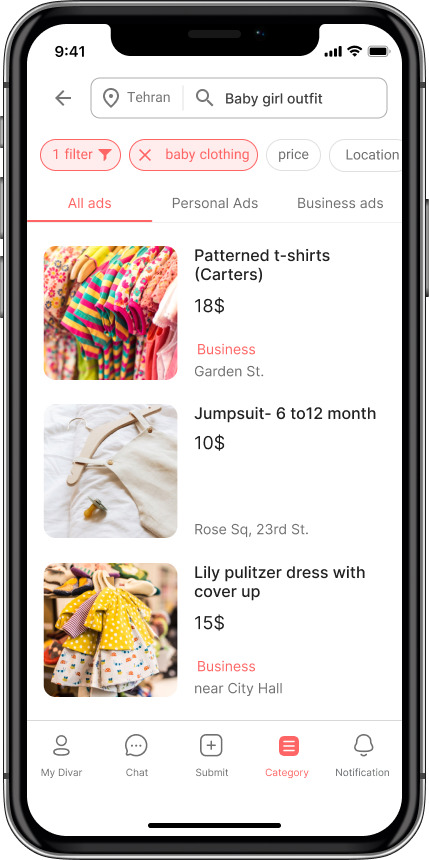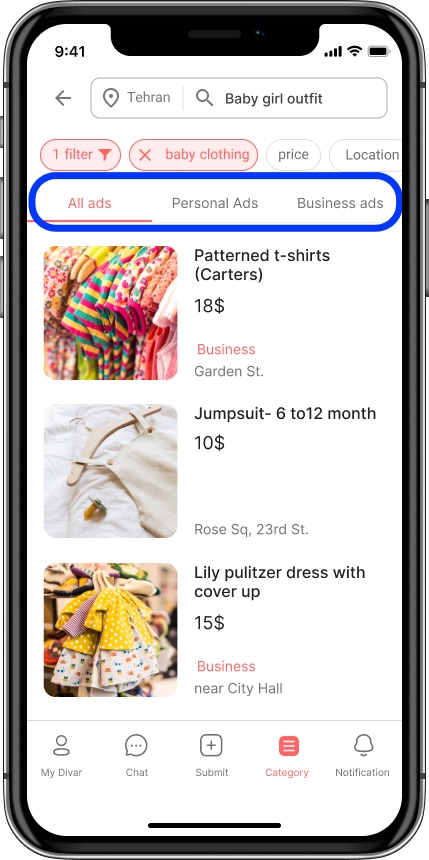

A UX research case study: why users are not using our solution to separate ads?
source link: https://uxplanet.org/a-ux-research-case-study-why-users-are-not-using-our-solution-to-separate-ads-47c28269c37
Go to the source link to view the article. You can view the picture content, updated content and better typesetting reading experience. If the link is broken, please click the button below to view the snapshot at that time.

https://unsplash.com/photos/8t44s7E3tO4
A UX research case study: why users are not using our solution to separate ads?
Context
Divar is a classified ads platform with +35 million monthly active users who buy and sell new and used goods, cars, real estate, and even post and find jobs and services.
I am a UX researcher in the Goods vertical, which includes various categories of goods and commodities from electronic devices to home and kitchen gadgets.
Problem
There are two types of sellers: Business sellers and Personal sellers.
The present solution for the buyers to separate ads based on the seller type was three tabs- one for personal sellers, one for the business sellers, and one as the default tab containing all the ads regardless of the seller type.

a display of the tabs for separating personal and business tabs
In a survey that I did to quantify the most important problems of the buyers, 25% of the users stated that one of their most important problems while finding their desired ads is that personal and business sellers are not separated. It was unexpected to some extent since we thought these tabs were there to solve this problem. We checked the usage data of the tabs and realized only 4% of the users are using them. So here is my primary research question:
Research Question (Qualitative phase): Why users don’t use the tabs to separate business from personal ads?
Research Execution:
I ran some remote test sessions with the participants in my previous research. The ones that had declared one of their most important problems in finding their desired ads is that personal and business ads are not separated. I asked them to share their screen with me on Skype, do some tasks and answer some questions regarding the issue, like why they don’t use this solution.
The main findings:
Users do not use these tabs for the following reasons:
1- The tabs do not appear for them because they haven’t updated their app, so they don’t see some of our new features, including this one.
2- They search in the root and do not set a category for their search, so the tabs do not appear for them because we are not sure if they are looking for something in the goods and commodities categories.
3- The tabs appear for them, but they don’t see them.
What did the team do with the research findings?
1- The issue about not updating the app exists for almost all of our new features and resolves gradually during the time and future force updates. Our data shows that 90 days after a release, about 60% of the users update their app.
2- Searching in the root can be an issue for 32% of our users, as data suggests that 32% search in the root without setting a category. Considering the impact and estimated effort of providing a solution for this issue, the technical team considered a logic to determine if the user’s query was related to goods and commodities categories or not; if that was true, they showed the tabs to the user.
3- The third issue about the users who didn’t see the tabs, although they appeared for them, called for a possible redesign of the tabs. We could estimate the effort (which seemed high at first glance), but we had no idea about the impact of solving this problem. So this was the question for my following research: What percentage of the users do not see the tabs?
Research Question (quantitative phase): Do we need a redesign?
To find the answer, I wanted to see how many users were affected by the third issue. In other words, what percentage of the users do not see the tabs? We could also later use this number as a metric to monitor the impact of the redesign.
But first, I needed to know the threshold that would lead to a redesign. Should we go for a redesign if 50% of the users do not see the tabs? or 30% or 60%? These numbers seem arbitrary because they are!
So we thought since we prioritized the second issue- which is affecting 32% of the users- maybe it’s logical to solve this issue too if it is affecting the same percentage or more. In other words, we wouldn’t go for a redesign if this issue is real for less than 32% of the users.
Research Execution:
This time I sent out a questionnaire to users who
1- do not use the tabs
2- have updated their app
3- search by setting a category (for example, by setting filters or using search suggestions).
I set these conditions because I wanted to see how many users have not seen the tabs, although they are bothered by the messy listing, and the tabs appear for them.
So in the questionnaire, I asked them whether they were bothered by seeing a mix of personal and business ads in the listing. If they said yes, I showed them the following picture asking if they had seen this feature to separate ads or not shown in the blue rectangle.

Distinguishing the feature in the questionnaire
Then I asked if they had ever used these tabs (to double-check my data that said these users had not used the tabs recently), and if not, why? (with an open box to answer)
Findings:
The short answer to the research question was yes, we need a redesign.
The long answer is that since 58% of the users mentioned above have not seen the tabs, even considering the margin of error, it is still significantly higher than the decision threshold (32%), so a redesign is needed.
I used the following diagram to convey my findings to the team:

Demonstration of the results to facilitate decision-making
Impact
After solving two of the issues found in the research, the tabs’ usage to separate personal from business ads increased by more than 50%. Also, We expect to see a decrease in the complaints about the messy listing from 25% in the next round of the initial survey.
Recommend
About Joyk
Aggregate valuable and interesting links.
Joyk means Joy of geeK